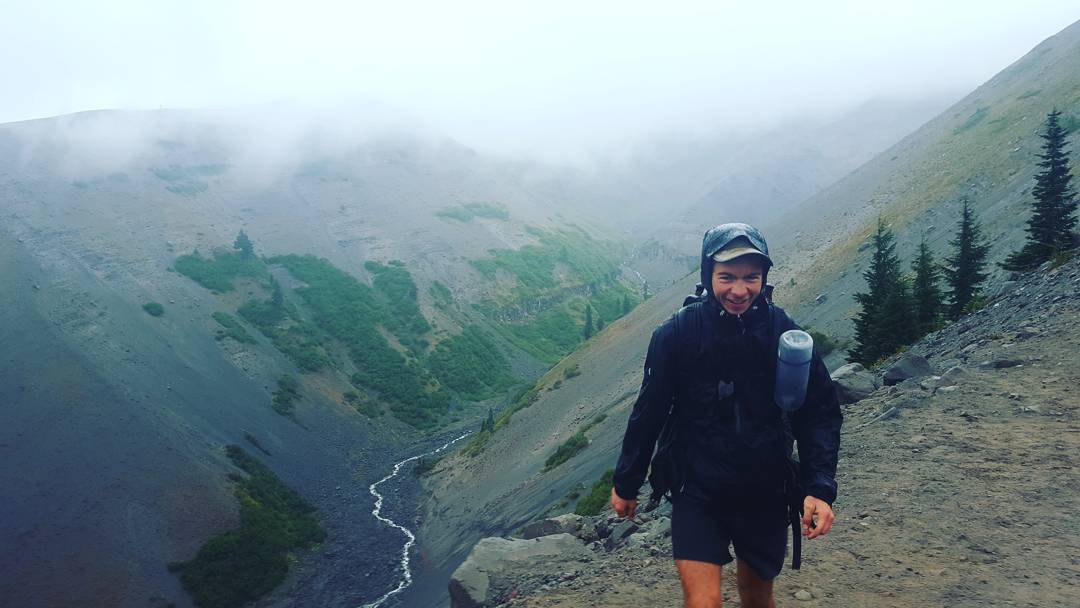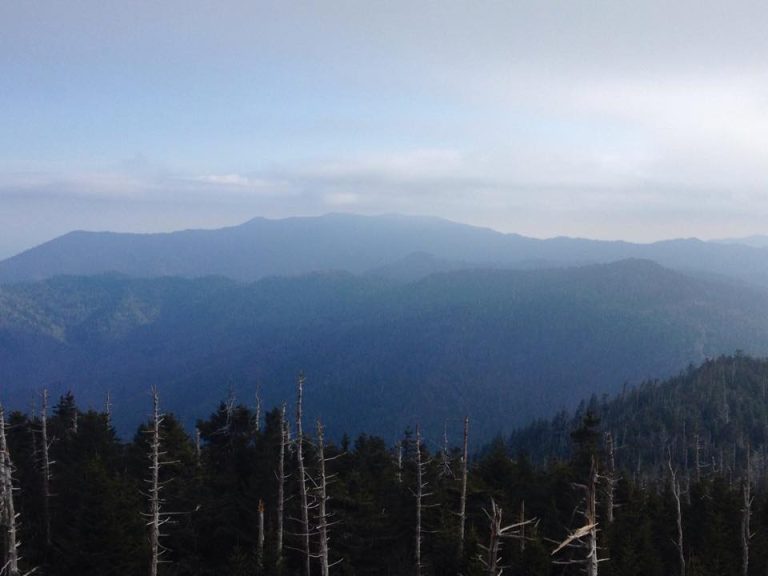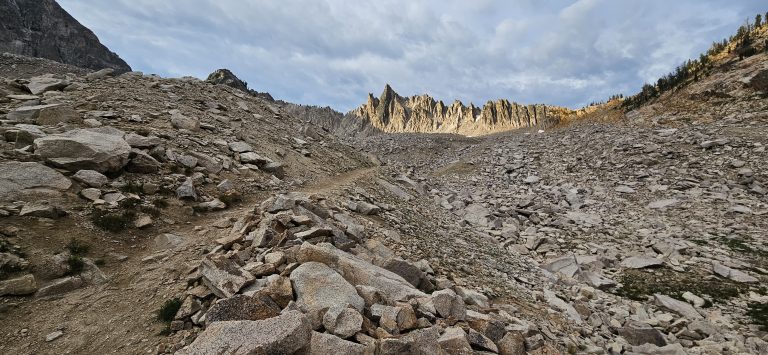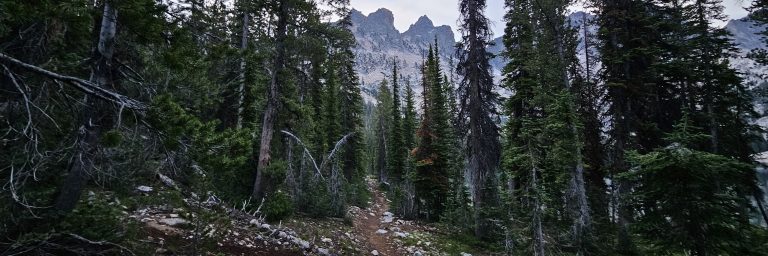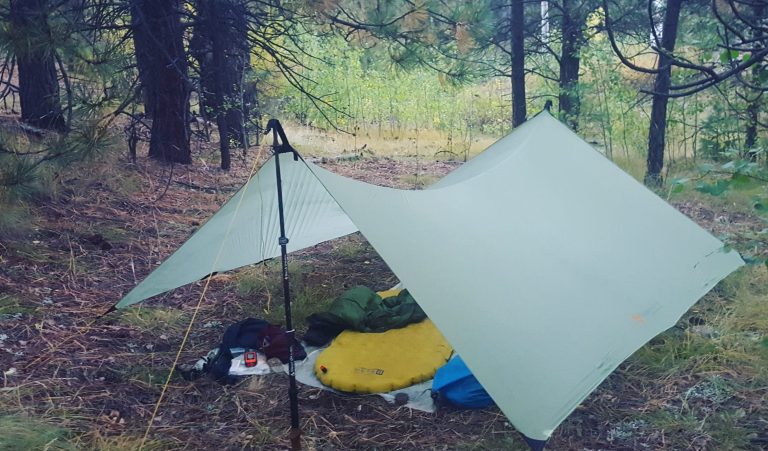Hiking in the Rain: Seasoned Tips to Master Wet Weather Treks
Over thousands of miles and millions of rain drops, I’ve had many ups and downs while hiking in the rain. Some of my most dire moments while backpacking were in the rain. There can be nothing more frustrating than enduring day after day of cloudy skies, threatening thunder, or worse. But fear not – I have taken all the work out of it for you! My goal with this article is to help you prepare to face the rain and confidently take control of your hike. It doesn’t have to be frightening.
Rain Gear
I will never leave the house for an extended hike without some form of rain gear. What gear I take depends on the expected conditions. If I’m expecting heavy downpours and chilly temperatures, I’ll take a lightweight rain jacket, my trekking umbrella, and a rain skirt. The combination of these three rain specific items has seen me through many of my worst times.
If I’m expecting a minimal risk of rain, I’ll take my umbrella and a windbreaker – this is plenty for a gentle rain, or intermittent drizzles. (Bonus: The umbrella does double-duty as rain and sun protection!)
Footwear is also an important piece of the rain gear arsenal. Traditional backpacking wisdom espoused water-proof boots. They may have their place, but in my opinion, that place is not in a rain storm while you hike. Inevitably your waterproof boots will get wet inside and they will never dry out. I can’t imagine 3 or more days in a row of rain with such boots.
Instead, look for some comfortable trail runners with plenty of traction and mesh material. This will ensure you don’t slip and slide on rocks (I’ve had more than a few close calls), and the mesh material will let water freely escape. Once the weather breaks, your shoes will dry out.
In Montana on the Continental Divide Trail, I experienced quite enduring rain in Glacier Nat’l Park. The daytime temperatures were in the mid 50’s to low 60’s. But having a rain shell, and my rain skirt helped me stay warm enough while hiking. Not dry though. This is a common misconception. Rain gear is not able to keep you completely dry, but warm. A rain jacket will saturate with moisture after a while because condensation and sweat collect inside the material. But since the shell material acts as a windbreaker, it cuts the sting of wind while also allowing a reasonably waterproof barrier from the elements.

The importance of layers cannot be overstated. In cold, wind, and rain, the risk of hypothermia is huge with prolonged exposure. But being able to modify layers allows you to regulate your core temperature. When I finally had my rain system tweaked to my liking, it worked seamlessly with my other clothing. I have a hooded long sleeve base layer, a mid layer (like a button up shirt), and a synthetic insulating layer if it gets too cold. Paired with my rain gear, I’m able to face harsh storms with reasonable comfort. I’ll add wool mittens if needed. Lots of trial and error was needed to figure out what works best for me.
Mindset for Hiking in the Rain
If I’m on a thru-hike, or backpacking for the weekend, extended rain can really wear my spirits down. But there are some mindset shifts I can make that can help bear the challenge.
First, I remind myself that it has to stop raining at some point. It always breaks, and it might be a while. But it will break. Just as trials in life eventually will let up, the rain will too.
Listening to music or an audiobook is also a great way to keep your mind off the situation, and can help you relax while hiking through a downpour. I’ll also vouch for the effectiveness of hiking with a friend (or even a complete stranger you meet on the trail!). Misery loves company, and being able to commiserate in the moment is extremely effective. There have been many times where I am alone for hours or days in the middle of a rainy stretch, when out of nowhere I catch up to a friend, or I meet a new one. The relief that comes with that is palpable. “Finally, someone who is as miserable as me!”
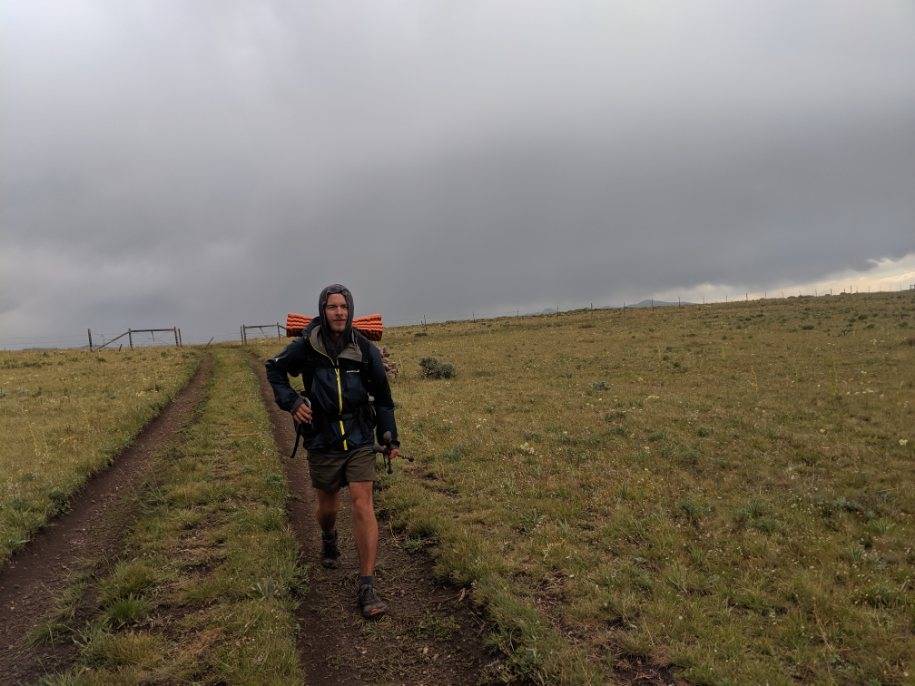
I’d also add the importance of taking the little victories throughout the day. One of my favorite examples of this was in Washington. I had been hiking all day, and the rain clouds loomed overhead. But there was little more than a drizzle. Finally, approaching my last mile for the day, I began to race to my campsite as I heard thunder. I setup my ultralight tent in probably 2 minutes and within seconds of getting inside, it started pouring. I take a huge sigh of relief, even years later, after that victory. I ate dinner inside my tent, listened to music, and curled up snug inside my toasty quilt while the rain spattered on my tent.
Keep Moving but Know When to Stop
It’s important to keep your body temperature up as it rains. I encountered some of the most uncomfortable (and frankly, frightening) stretches of trail in the northwest during heavy rain. I recall frigid cold rain and wind that made my feet feel like pins and needles for hours. The perseverance to keep moving helped me stay warm in my core for far longer than I thought possible.
The Glacier Peak Wilderness in Washington during September was the setting for my most uncomfortable night on trail. I learned a lot about my ability to accept my limits. I had been hiking alone all day. I didn’t see a soul. The bright white cloudy skies were turning dark. It was getting colder and windier, and I began to have a slight shiver, even amid thorough activity. Then and there I knew to start looking for a campsite. It was time to get warm and dry. I hastily found a small patch of trees for a wind block, and set up my tent as quickly as I could.
My hands were beginning to lose fine motor skills, and it seemed I setup my shelter at just the right time. I was grateful to finally be inside my tent, and inside a dry down sleeping quilt. I layered up as much as possible, and within minutes I was feeling better. Eating a candy bar really helped me warm up too. I was humbled that night. But it gave me a valuable experience in knowing my limits, and respecting the weather. Even a brush with the beginnings of hypothermia is terrifying. Especially since I was all alone.
Dry Out Your Gear
Drying out my backpacking gear is like a breath of fresh air. Especially after stretches of heavy rain. Usually, after a day or two of rain, it’s fine. But by the third day, the moisture of the environment tends to just find its way into my pack through the normal process of setting up and taking down camp.
This is why I take every opportunity to find a sunny spot for lunch, unload my backpack, and let the sun do its work. I will surround myself with wet socks, wet rain gear, my wet pack, and any other casualty of hiking in the rain. As a side note, I don’t use a rain cover while backpacking – they usually have open spots near the shoulder straps that end up letting water drip down, or they snag on brush. Instead, I use a trash bag as an ultralight liner. In my thousands of miles of hiking, I’ve never had my sleeping bag or dry clothes get wet from rain using this method.
After that awful night in Glacier Peak, the morning finally came. I opened my tent, and was greeted by beautiful blue sky and sunshine. Once I had the opportunity to let the sun dry my gear, I felt like I could have a reset. It’s a huge mental boost. Not to mention the pure joy of seeing blue sky and feeling a bit of warmth from the sun after a hellacious night.
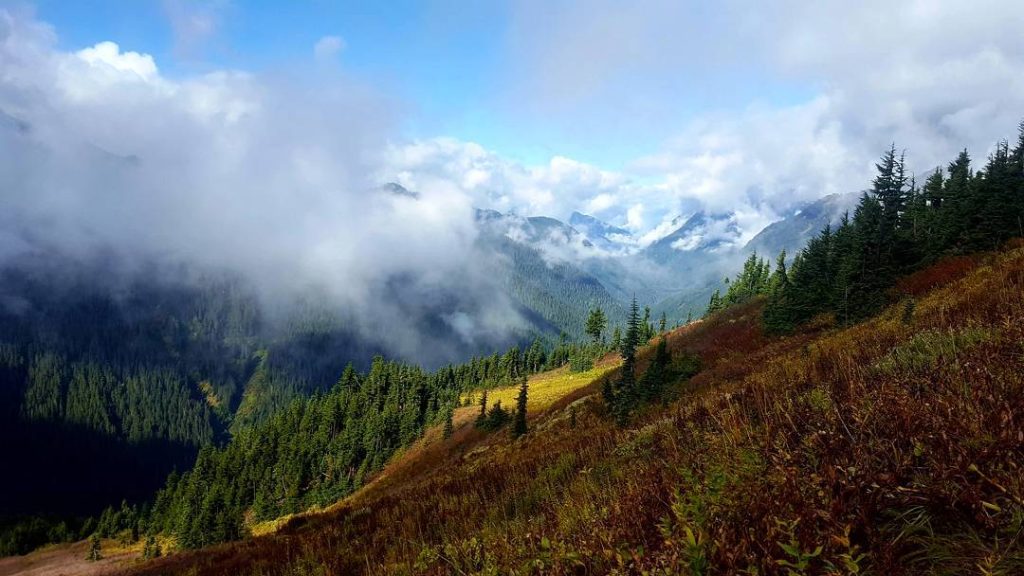
Conclusion
Hiking in the rain doesn’t have to dampen your spirits, weary traveller. If you take the tips I’ve given into account, next time the storm comes along you’ll be able to face it with confidence. I’d like to reiterate that backpacking in these conditions is largely a mental game. As long as you listen to your body, there’s plenty you can do to avoid despair. I have shared my experiences not to discourage you, but to show that I’ve seen how ugly it can be, yet I made I out just fine. I hope with my advice you can avoid the situations I found myself in.
If you found this helpful, you can also check out this post for some of my personal ultralight tips.

